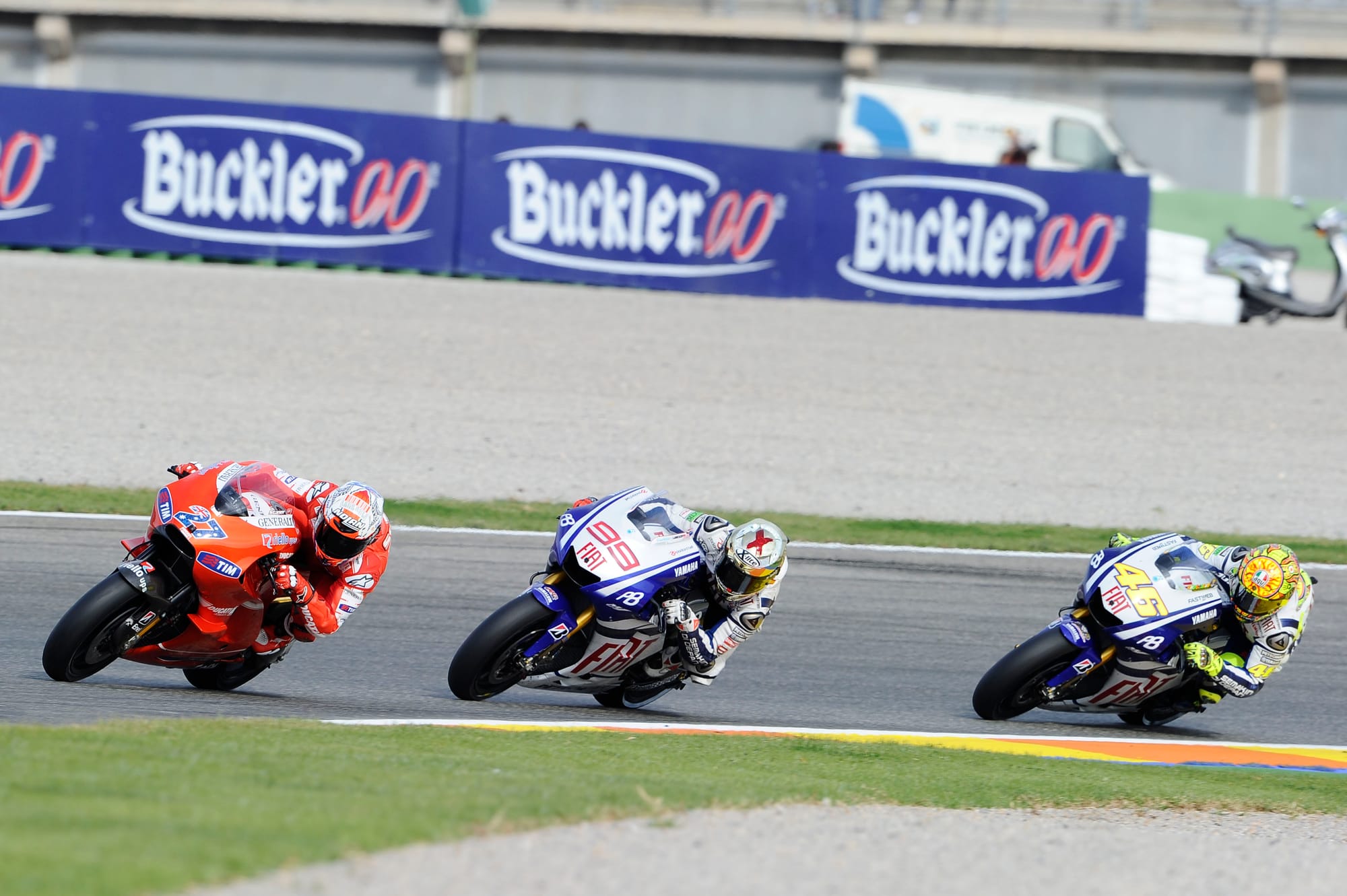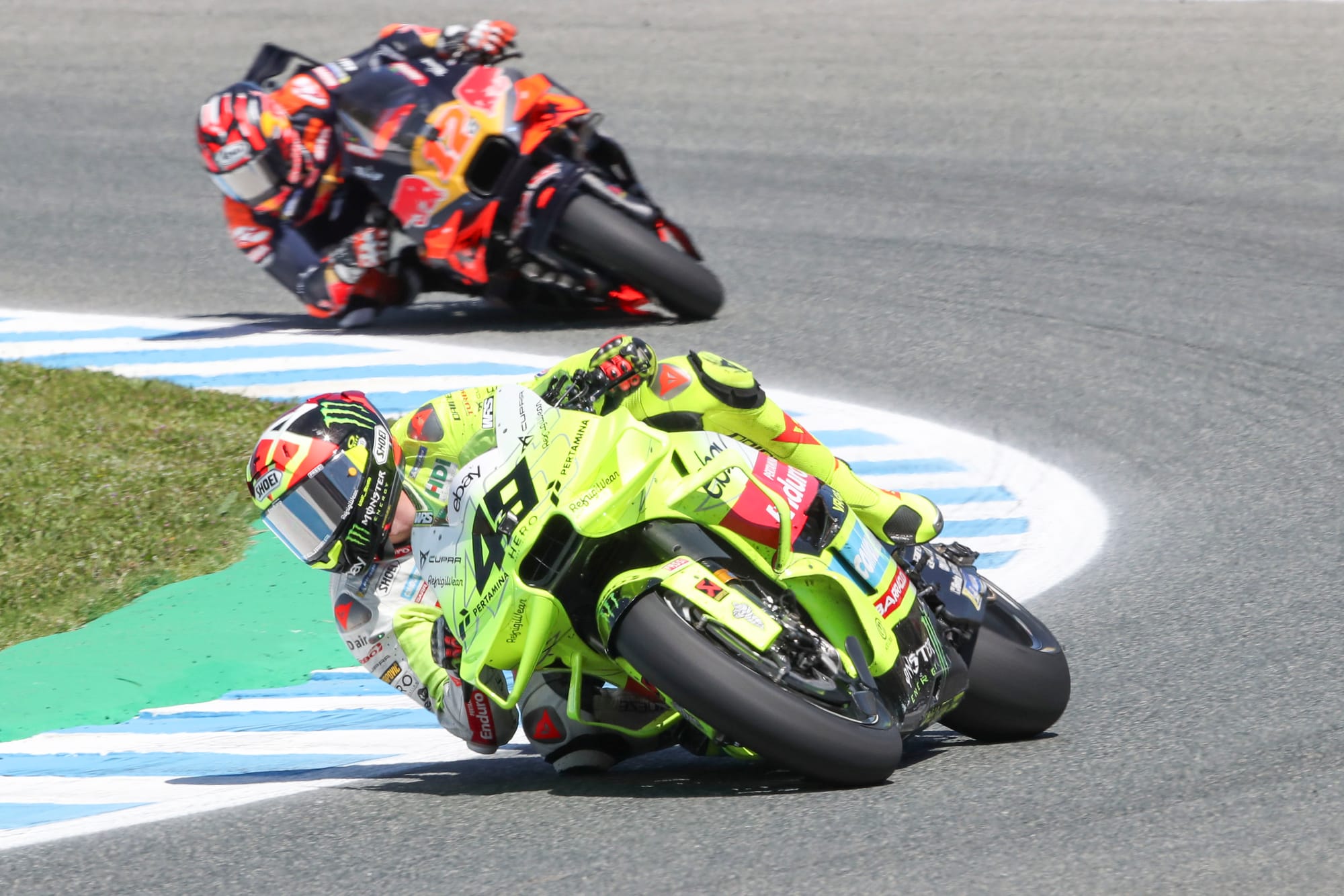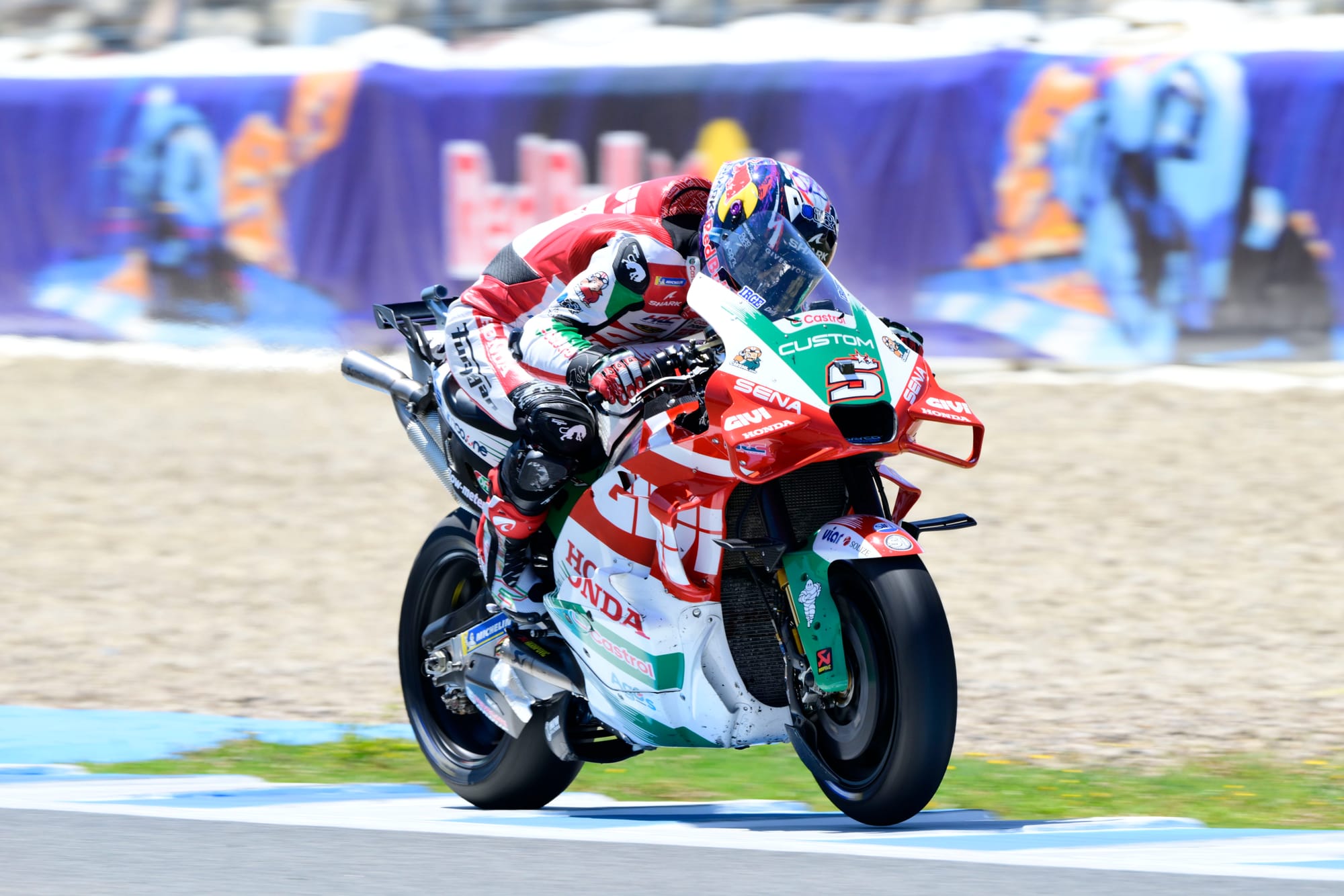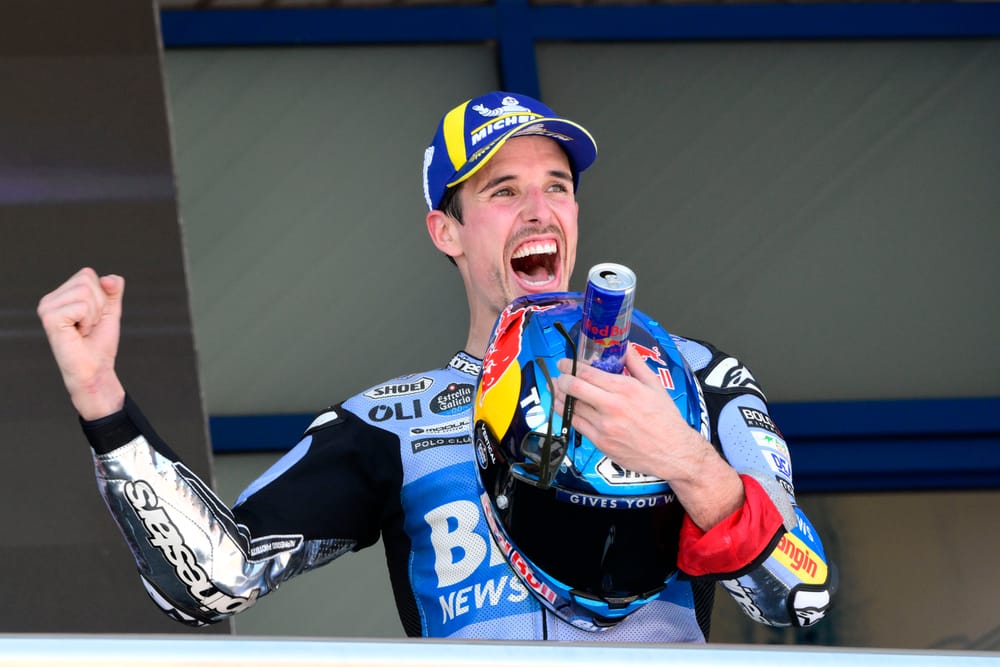Though their respective careers are in a sense as different as they get, MotoGP's newest grand prix winner Alex Marquez has something in common with its previous two new winners, Fabio Di Giannantonio and Johann Zarco.
Before they all found their way to the immortality of a premier-class grand prix win, all three were burned assets. 'Burned' not in the sense that their continuation in MotoGP was untenable (although for Di Giannantonio it sure was), but in the sense that, in a more hierarchical grid, their path to a bike that would've contended for a win in a conventional race would've been shut forever.
That hierarchy is something a lot of people probably miss. A decade ago or so, as Honda and Yamaha hoovered up the 'alien' riders and gave them the best bikes, the works bikes, those other 'grid-filler' riders could hardly dream of what Di Giannantonio, Zarco and Marquez have achieved.
It was part of the appeal. To get into the 'pantheon' you had to see off Valentino Rossi, Jorge Lorenzo, Dani Pedrosa, Casey Stoner (and then Marc Marquez), all with the full might of the best factories behind them. But MotoGP's ruling class is no longer this impenetrable, and you can either choose to see that as evidence that the standards for race wins and championships have dropped, or as evidence that MotoGP has been 'democratised'.

It's a funny word to use, perhaps, when Ducati routinely humiliates its four rival brands on a weekend-to-weekend basis, but there are indisputably more pathways to glory, more lottery tickets to go around, in a series where far from every rider can win the championship but 75% of the grid or so have it in them to put together a win-worthy weekend.
Wen I interviewed Alex Marquez in 2022, a mediocre-seeming LCR rider flailing his arms in the quicksand of Honda's floundering MotoGP project which, even amid its struggles, had precious little reason to give him another contract, I was definitely eyeing it up as a potential premier-class career epitaph.
"I know that I'm a two-time world champion and I believe in the work that I do, I know that physically I'm in the [right] form, mentally also, it's just a matter of time to be back [up] there," he told me.
"We just need to wait a little bit, to have patience. But it's not easy to have patience here because the races are passing."
The races kept passing. As Marquez recalled after taking his grand prix win this past Sunday: "I remember, in '22, I was at the Sachsenring, already half-season, everybody had a contract. I was with no contract, no interest from teams. I just went to Gresini, I just told them, 'I want your bike, I don't care about the other things, I just want your bike. Give me one year and then we'll see'.
"From the first lap in Valencia [post-season testing] with the Ducati I understood the potential was there."

He bet on the right horse - which anyway the only horse he could've bet on. But it is true that this is another major thing he has in common with Di Giannantonio (above) and Zarco: they all became winners because in that moment they were all Ducati satellite riders.
But it just won't have been possible - save for particularly goofy wet-weather races - under the previous MotoGP blueprint. Rewatching the 2015 season as part of our podcast series for The Race Members' Club, a season dominated by Yamaha, and seeing the extremely professional and capable Tech3 team never-ever-ever in the mix with the factory team, I feel the contrast acutely.
The only thing Tech3 riders Pol Espargaro and Bradley Smith did in those years together, in terms of their careers, was beat each other enough to make sure neither got a top-level factory seat at Yamaha.
Now, the regulations are so mature that even the year-old hand-me-down bikes are strong, and every factory acutely realises the data-gathering advantage of having as many factory-spec bikes as possible. Which is why Zarco (below) routinely humbles the factory Hondas, why rookie Ai Ogura can put Aprilia on his back - and, yes, why Jorge Martin could win the world title.

In a MotoGP where four-to-six works bikes could win anything, there was no reasonable path for 29-year-old Alex Marquez to get one of those. He has always been a supremely talented rider, make no mistake, but three years in the general wilderness of a declining Honda RC213V - in which he did not meaningfully separate himself from his peers - would've simply ensured he's a forever grid filler at best.
In that aforementioned interview, I asked him whether he would trade his Moto2 and Moto3 titles for the guarantee of being a MotoGP frontrunner. He said no - only for a MotoGP title - but I had anyway thought of the question as wishful thinking.
Three years later, he leads the championship on merit. He probably won't win it - but, you know, he might.
If you want to argue this wouldn't have happened in the era of Rossi-Lorenzo-Stoner, yeah, you can. And when Pecco Bagnaia caused a stir two years ago when he said the satellite bikes are too close to the factory bikes, just as a safety factor in terms of how close everyone is on track all the time, he genuinely had a point - which he got roundly ridiculed for.
But Alex Marquez's rise is a reminder that MotoGP now is a genuine 22-rider championship. The vast majority of the grid have accomplished a lot before MotoGP, have won a lot, have proven themselves to have elite-level peaks in at least some combination of conditions and scenarios.
Most of them won't win anything this year but Alex Marquez's example - and the example of Zarco, and that of Di Giannantonio - means a lot still. It means they can dream. It means they can believe. It means there's a point to it all.



